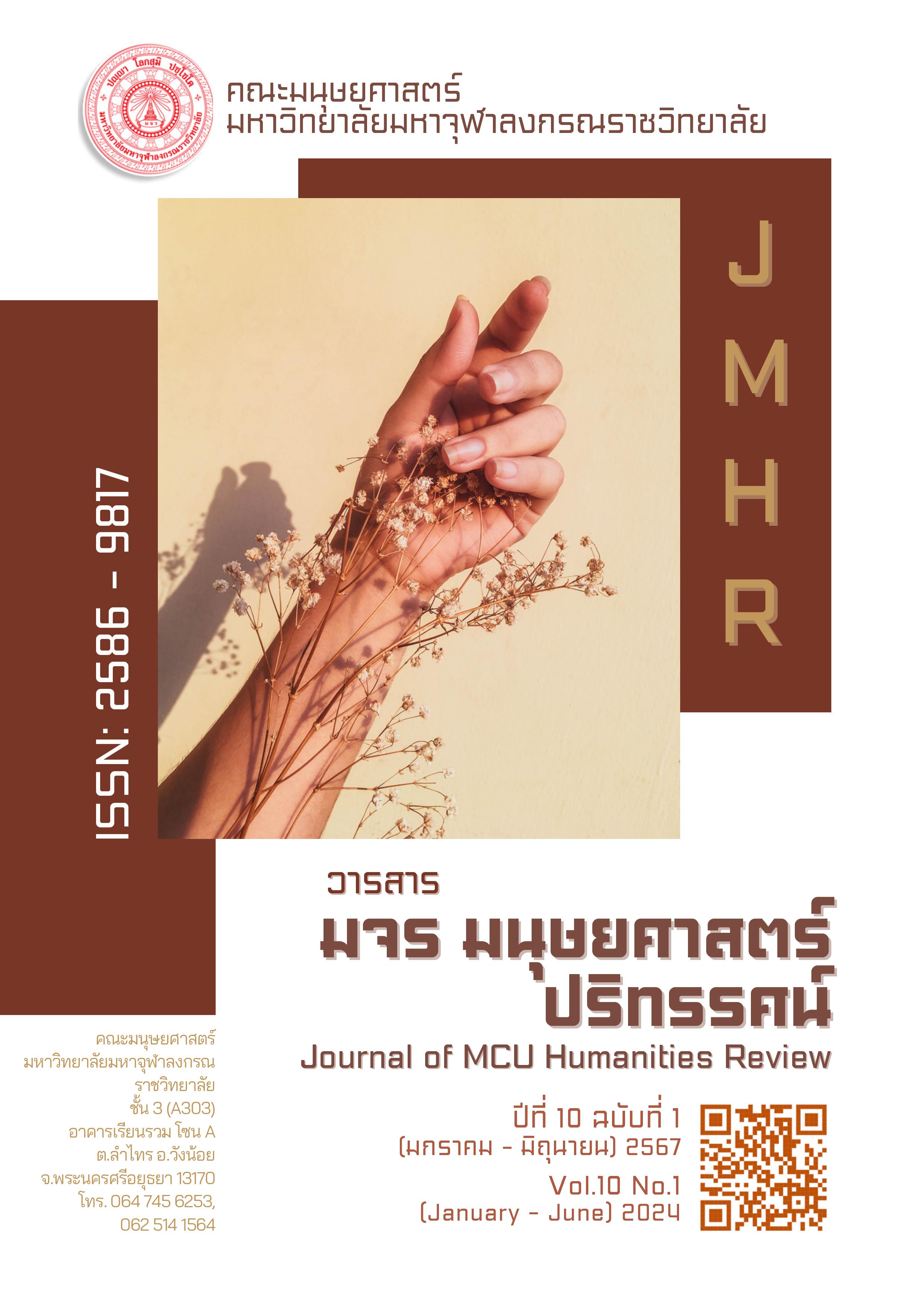Buddhist Psychology Program on Eco-meditation Ways for Sustainable Forest Conservation for Youth
Keywords:
Buddhist Psychology, Eco-Meditation, Forest Conservation, YouthsAbstract
This research has three objectives: 1. to analyze the principles of Buddhist Dharma, concepts, Related theories of psychology and ecological prayer to synthesize the concept of Buddhist Buddhist Psycology on Eco - Meditation ways. 2. To synthesize the characteristics and factors of the Buddhist Psycology program on Eco - Meditation ways for sustainable forest conservation for youth. 3. To develop and evaluate the Buddhist psycology Program on Eco - Meditation ways for sustainable forest conservation for youth. This research is a combination of methodology and quasi-experimental research. Using quantitative research methods and qualitative research methods, expand the results of quantitative research methods. The samples are: Youth High School Wat Samnak Khro The sample was assigned using G*Power program with a sample group of 60 people. Quantitative data analysis uses t-test statistics, two-way repeated measures (ANOVA), and qualitative data analysis using content analysis methods.
The research found that:
The concept of Buddhist psychology of the ecological way of meditation is the concept of integrating the principles of Buddha Dharma Trisikkha and the principles of Buddha Dharma Paratokosa together with psychological theory and the concept of eco-meditation. 2. The characteristics and factors of the Buddhist Psychology of Eco-Bhavana program are: 1. Seeing beauty, 2. Appreciation, 3. Fear of forest depletion, 4. Intention 3. The results of the environmental behavior program, namely attitudes and awareness in 4 areas, showed that the experimental youth had a statistically significantly higher mean score than before the experiment and higher than the control group at the level of .05. Qualitative data supporting quantitative data showed that participants developed environmental behaviors in forest conservation, leading to sustainable forest conservation.
References
ค้าวิเศษ เพ็งวันสวรรค์. (2561). แนวทางการอนุรักษ์และฟื้นฟูทรัพยากรป่าไม้เขตป่าสงวนแห่งชาติดงหัวสาวพื้นที่บ้านน้้าพาก เมืองปทุมพร แขวงจำปาสัก สาธารณรัฐประชาธิปไตยประชาชนลาว. วารสารนวัตกรรมการจัดการเทคโนโลยีสารสนเทศ, 6(2), 9.
ชลธิรา ชาวบ้านกร่าง. (2561). การสำรวจความตระหนักทางสิ่งแวดล้อมของนักเรียนชั้นประถมศึกษาปีที่ 6 สำนักงานเขตพื้นที่การศึกษาประถมศึกษาสุพรรณบุรี เขต 3. ใน การประชุมวิชาการของมหาวิทยาลัยเกษตรศาสตร์ ครั้งที่ 56 (น. 172). กรุงเทพฯ: มหาวทิยาลยัธุรกิจบัณฑิตย์.
พระครูพิพิธจารุธรรม, ดร. (2557). แนวทางการอนุรักษ์ป่าตามหลักคำสอนพระพุทธศาสนาเถรวาท (รายงานผลการวิจัย). พิษณุโลก: วิทยาลัยสงฆ์พุทธชินราช.
มหาจุฬาลงกรณราชวิทยาลัย. (2535). พระไตรปิฎกภาษาบาลีฉบับมหาจุฬาเตปิฏกํ 2500. กรุงเทพฯ: โรงพิมพ์มหาจุฬาลงกรณราชวิทยาลัย.
ลินดา การภักดี. (2561). การพัฒนาชุดฝึกอบรมสิ่งแวดล้อมน่ารู้เพื่อเสริมสร้างความตระหนักรู้ต่อสิ่งแวดล้อมสำหรับนักเรียนชั้นประถมศึกษา (ปริญญานิพนธ์ปริญญาดุษฎีบัณฑิต). มหาวิทยาลัยศรีนครินทรวิโรฒ. กรุงเทพฯ.
สำนักงานคณะกรรมการพัฒนาการเศรษฐกิจและสังคมแห่งชาติ. (2560). แผนพัฒนาเศรษฐกิจและสังคมแห่งชาติ ฉบับที่สิบสอง (พ.ศ. 2560 - 2564). สืบค้น 2 ธันวาคม 2564, จากhttp://www.nesdb.go.th/ewt_dl_link.php?nid=6422
Downloads
Published
How to Cite
Issue
Section
Categories
License
Copyright (c) 2024 Journal of MCU Humanities Review

This work is licensed under a Creative Commons Attribution-NonCommercial-NoDerivatives 4.0 International License.






